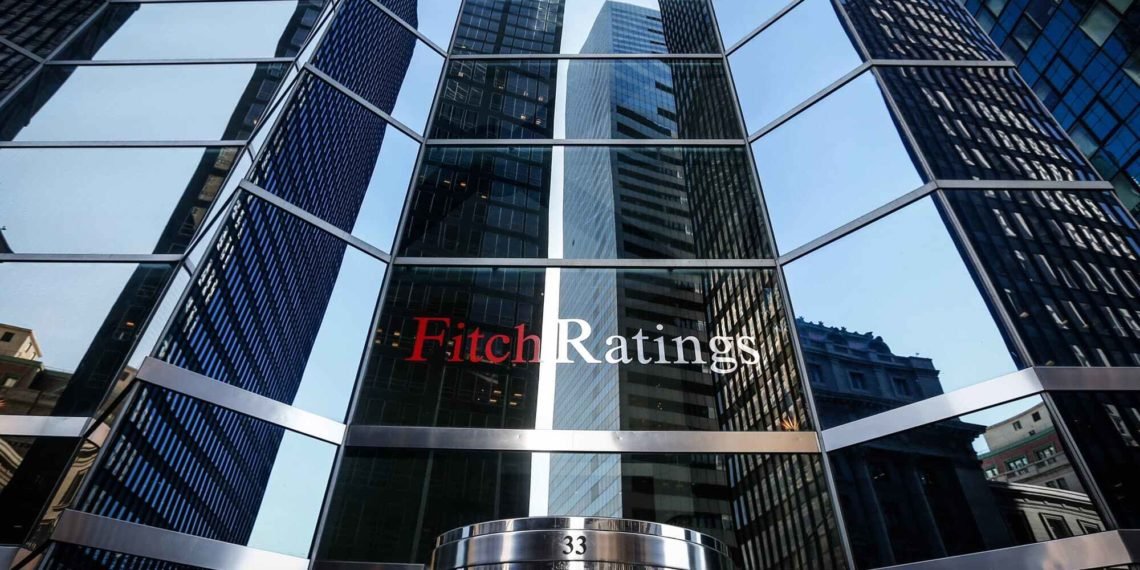The International Ratings Agency, Fitch Ratings has upgraded United Bank of Africa, UBA (Ghana) Limited’s Long-Term Issuer Default Rating (IDR)— a measure of the default risk of an agency, to ‘B’ from ‘B-’ and the Viability Rating (VR) — assesses the probability that a company will no longer be in business, from ‘b-’ to ‘b’.
According to Fitch, the outlook on the Long-Term Issuer Default Rating is stable. The upgrade reflects the strengthening of the banks capitalization and leverage, following from the increase in tangible common equity to 26 percent at end of September 2020, from 18 percent at the end of 2019, notwithstanding high operating environment risks from the pandemic.
KEY RATING DRIVERS
IDRs AND VR
UBA Ghana’s IDRs are driven by its creditworthiness, as expressed by its Viability Rating. The ratings reflect the concentration of the bank’s operations in the volatile Ghanaian operating environment, extremely high levels of impaired loans and company profile weaknesses.
Additionally, the ratings consider the bank’s strengthened capital position, underpinned by its strong profitability, and solid liquidity position. This is against the backdrop that, the Ghanaian economy has fared relatively well in the face of the pandemic. Fitch expects real GDP growth of 2% in 2020, recovering to 5% in 2021.
Accordingly, UBA Ghana’s company profile is weakened by limited business model stability, as shown in high earnings volatility and sizeable shifts in balance sheet composition.
UBA Ghana has small market shares of assets and customers deposits (2% and 3%, respectively, at end-September 2020) but its franchise benefits from being a subsidiary of United Bank for Africa Plc, a pan-African banking group. Fitch expects the bank’s market shares to increase moderately over the next two years as management pursues an ambitious growth strategy.

Furthermore, UBA Ghana has exceptionally high impaired loans ratio (42% at end-September, 2020), and this is attributed to exposure to several bulk oil distribution companies (downstream oil companies) that have struggled to service their debt due to delayed payments from the government.
This notwithstanding, the loan book represents a small proportion of total assets (29% at end-September 2020), with much of the balance being Ghanaian government securities (B/Stable). The bank’s small loan book and limited exposure to vulnerable sectors outside its already-impaired loans has helped to insulate asset quality from the economic fallout of the pandemic.
Nonetheless, single-borrower credit concentration at the bank is high, with the 20 largest exposures (funded and unfunded) equivalent to a high percentage of total equity at end-September, 2020 exposing asset quality to the default of large borrowers.
Specific coverage of impaired loans (53% at end-September, 2020) is only modest, reflecting expectations of recoveries on the bank’s largest impaired loan (equal to 32% of gross loans, or 78% of impaired loans, at end- September 2020). However, realization of these recoveries has experienced significant delays and resolution of the exposure is uncertain, leaving the possibility that further loan impairment charges (LICs) will be required.
UBA Ghana delivers strong profitability, as highlighted by operating returns on risk-weighted assets that have averaged 12% over the past four full years. Profitability has been underpinned by Ghana’s high interest rate environment, which drives a wide net interest margin. However, earnings are highly dependent on net interest income, in particular interest income on government securities, and exhibit limited stability, reflecting changes in balance sheet composition and interest rates in recent years.
Nonetheless, profitability has been resilient to the economic implications of coronavirus, with low LICs attributable to the limited impact on asset quality. LICs were equal to just 6% of UBA Ghana’s pre-impairment profit in September 2020 (2019: 2%).
Capitalization and leverage have a high influence on the bank’s Viability Rating, having improved significantly owing to strong internal capital generation. UBA Ghana’s common equity Tier 1 (CET1) ratio (20% at end-September 2020) is comfortably above minimum regulatory requirements.
Reliance on non-deposit funding tends to be low and accounted for just 3% of total funding at end- September 2020. Nonetheless, the deposit base has weaknesses, as reflected in only a limited share of retail deposits, material reliance on less stable and more expensive term deposits and, most importantly, very high single-depositor concentration.
UBA Ghana’s low loans/customer deposits ratio (54% at end- September 2020) is reflective of a highly liquid balance sheet. Ghanaian government securities, bank placements and central bank reserves dominate the balance sheet, resulting in strong liquidity coverage that mitigates funding weaknesses.
SUPPORT RATING
Fitch’s view of support considers UBA Plc’s high propensity to provide support given its 91% ownership, common branding and the high level of management and operational integration between UBA Ghana and the wider group.
Fitch’s support assessment considers UBA Ghana’s strategic importance to the UBA Plc group’s regional network and ambitions as a pan-African banking group, despite the bank accounting for a small proportion of group assets (3% at end- first half of 2020).
However, Fitch considers that support from UBA Plc or from within the group, although possible, cannot be relied on, notably due to the cross-border nature of the parent-subsidiary relationship.
Fitch also believes that there is a risk of regulatory restrictions in Nigeria, particularly concerning foreign-currency flows out of the country that could constrain UBA plc’s ability to provide timely and sufficient support to its foreign subsidiaries.
READ ALSO: Fitch projects a stable outlook for African Banks



















